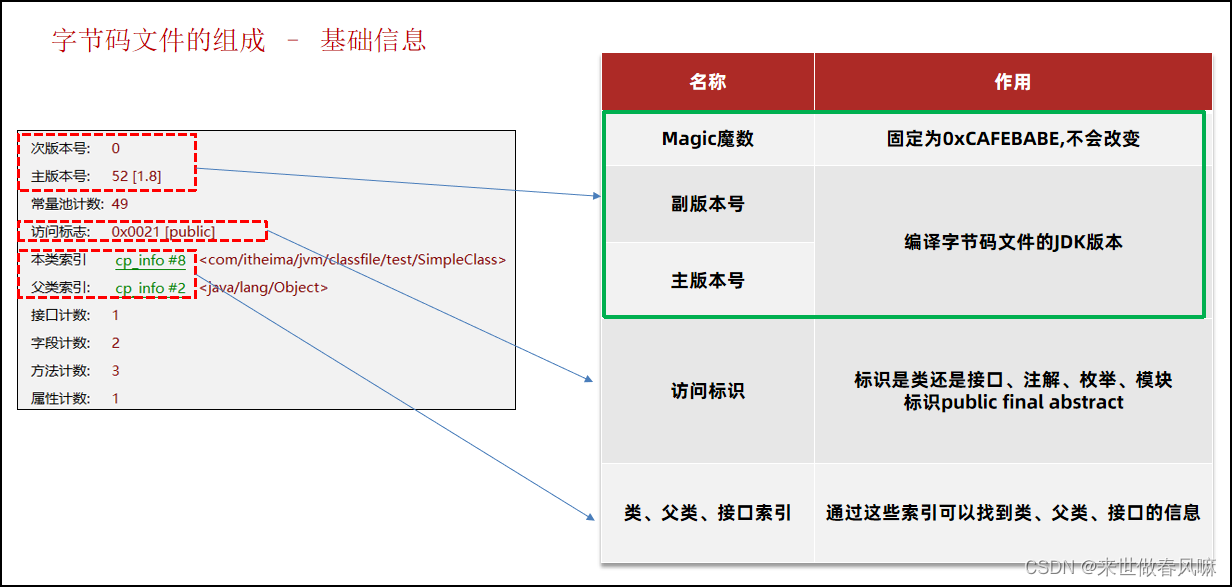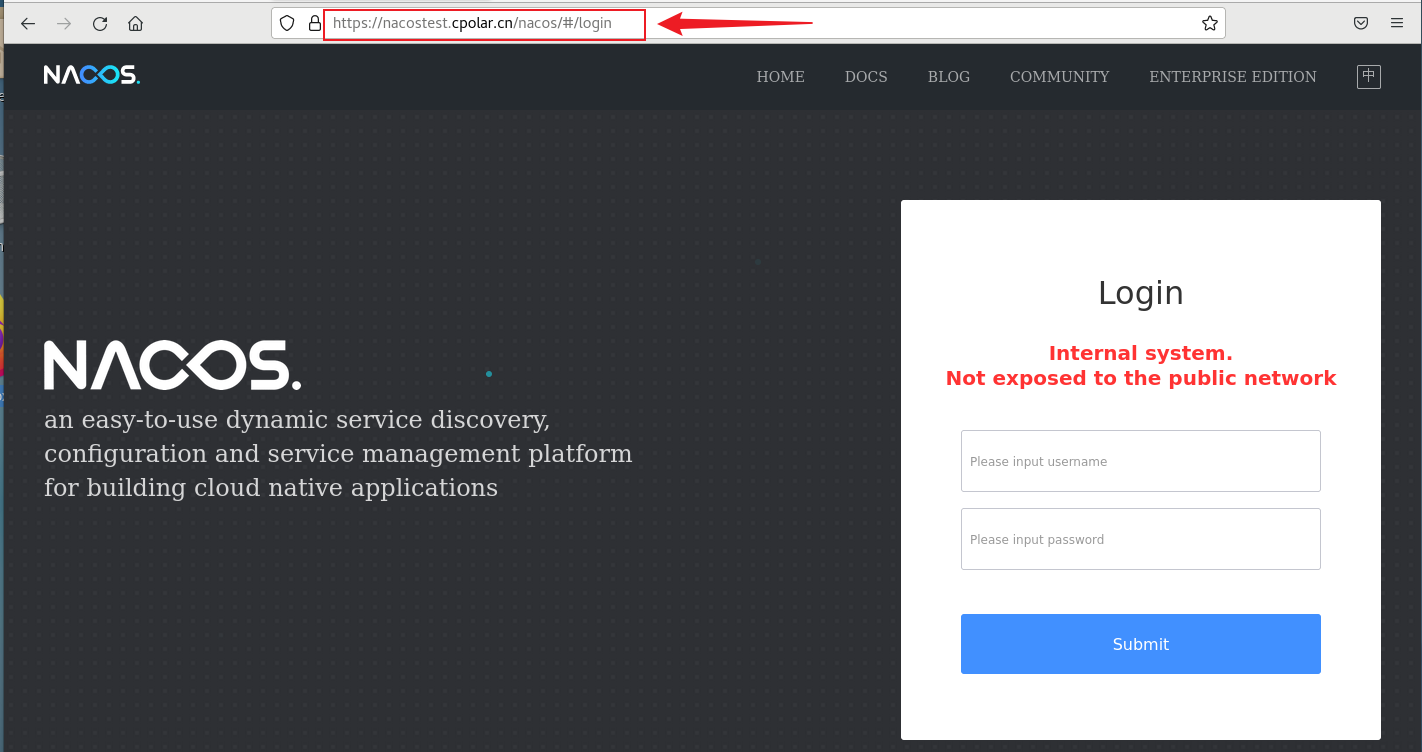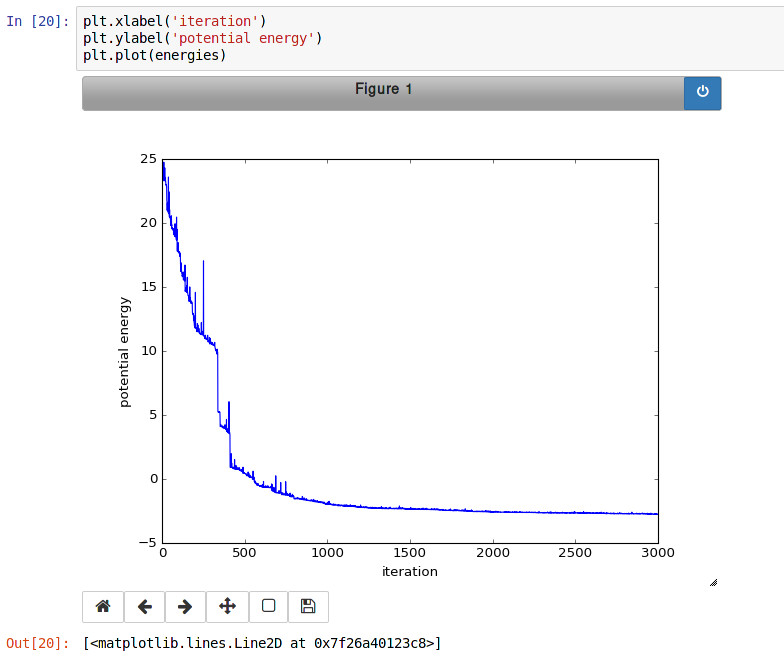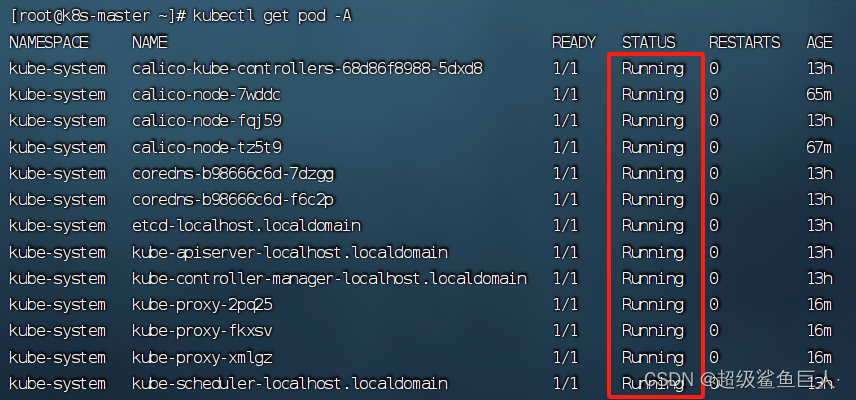Flask + MySQL结合案例
- 前言
- 正文
- 案例1:添加用户
- 1.1 浏览器发送请求,返回页面
- main.py
- html页面
- 1.2 新增用户并连接数据库
- main.py
- html页面
- 案例2:查询所有用户
- 2.1 main.py
- 2.2 html
- 2.3 bootstrap优化html
前言
在本文中,介绍如何将 Flask 框架与 MySQL 数据库进行结合,并以添加用户和查询所有用户的案例为引子,展示这一强大组合在实际应用中的无限魅力。通过本文的学习,将能够深入理解 Flask 框架与 MySQL 数据库的工作原理,掌握两者结合的关键技术,为今后的 Web 开发之路奠定坚实的基础。
正文
案例1:添加用户
1.1 浏览器发送请求,返回页面
main.py
from flask import Flask, render_template
app = Flask(__name__)
@app.route("/add/user")
def add_user():
return render_template("add_user.html")
if __name__ == '__main__':
app.run()
html页面
<!DOCTYPE html>
<html lang="en">
<head>
<meta charset="UTF-8">
<title>Document</title>
</head>
<body>
<h1>添加用户</h1>
<form>
<input type="text" name="user" placeholder="用户名">
<input type="text" name="pwd" placeholder="密码">
<input type="text" name="mobile" placeholder="手机号">
<input type="submit" value="提 交">
</form>
</body>
</html>

1.2 新增用户并连接数据库
main.py
import pymysql
from flask import Flask, render_template, request
app = Flask(__name__)
@app.route("/add/user", methods=["GET", "POST"])
def add_user():
if request.method == "GET":
return render_template("add_user.html")
else:
username = request.form.get('user')
password = request.form.get('pwd')
mobile = request.form.get('mobile')
# 1.连接Mysql
conn = pymysql.connect(host='127.0.0.1', port=3306, user='root', passwd='123456', charset='utf8', db='unicom')
cursor = conn.cursor(cursor=pymysql.cursors.DictCursor)
# 2.发送指令
sql = "insert into admin(username, password, mobile) values(%s, %s, %s);"
cursor.execute(sql, [username, password, mobile])
conn.commit()
# 3.关闭
cursor.close()
conn.close()
return "添加成功"
if __name__ == '__main__':
app.run()
html页面
<!DOCTYPE html>
<html lang="en">
<head>
<meta charset="UTF-8">
<title>Document</title>
</head>
<body>
<h1>添加用户</h1>
<form method="post" action="/add/user">
<input type="text" name="user" placeholder="用户名">
<input type="text" name="pwd" placeholder="密码">
<input type="text" name="mobile" placeholder="手机号">
<input type="submit" value="提 交">
</form>
</body>
</html>


案例2:查询所有用户
2.1 main.py
@app.route("/show/user", methods=['GET', 'POST'])
def showUser():
# 1.连接Mysql
conn = pymysql.connect(host='127.0.0.1', port=3306, user='root',passwd='123456', charset='utf8', db='unicom')
cursor = conn.cursor(cursor=pymysql.cursors.DictCursor)
# 2.发送指令
sql = "select * from admin"
cursor.execute(sql)
data_list = cursor.fetchall()
# 3.关闭
cursor.close()
conn.close()
return render_template("showUser.html", data_list=data_list)
2.2 html
<!DOCTYPE html>
<html lang="en">
<head>
<meta charset="UTF-8">
<title>Document</title>
</head>
<body>
<h1>用户列表</h1>
<table border="1">
<thead>
<tr>
<th>ID</th>
<th>姓名</th>
<th>密码</th>
<th>手机号</th>
</tr>
</thead>
<tbody>
{% for item in data_list %}
<tr>
<td>{{ item.id }}</td>
<td>{{ item.username }}</td>
<td>{{ item.password }}</td>
<td>{{ item.mobile }}</td>
</tr>
{% endfor %}
</tbody>
</table>
</body>
</html>
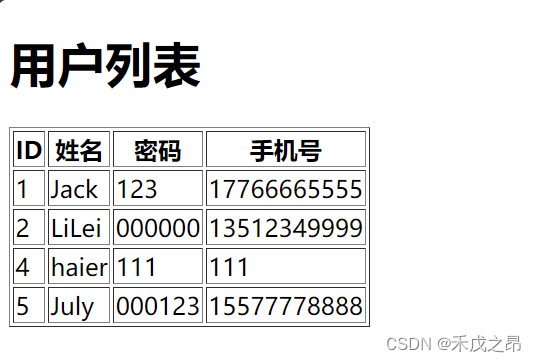
2.3 bootstrap优化html
<!DOCTYPE html>
<html lang="en">
<head>
<meta charset="UTF-8">
<title>Document</title>
<link rel="stylesheet" href="../static/plugins/bootstrap-3.4.1/css/bootstrap.css">
</head>
<body>
<div class="container">
<h1>用户列表</h1>
<table class="table table-bordered">
<thead>
<tr>
<th>ID</th>
<th>姓名</th>
<th>密码</th>
<th>手机号</th>
</tr>
</thead>
<tbody>
{% for item in data_list %}
<tr>
<td>{{ item.id }}</td>
<td>{{ item.username }}</td>
<td>{{ item.password }}</td>
<td>{{ item.mobile }}</td>
</tr>
{% endfor %}
</tbody>
</table>
</div>
</body>
</html>


